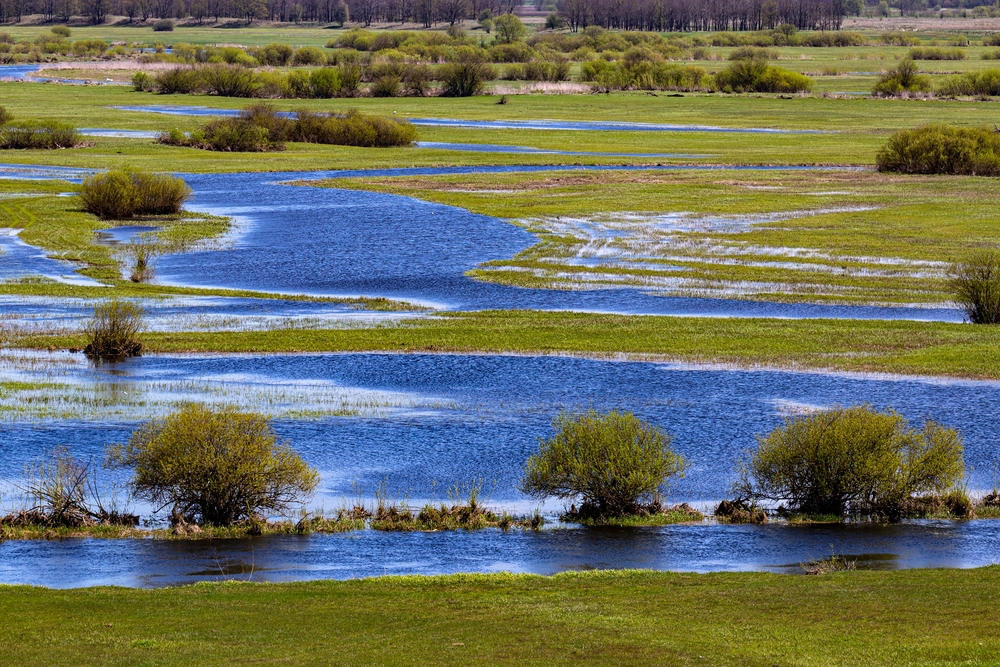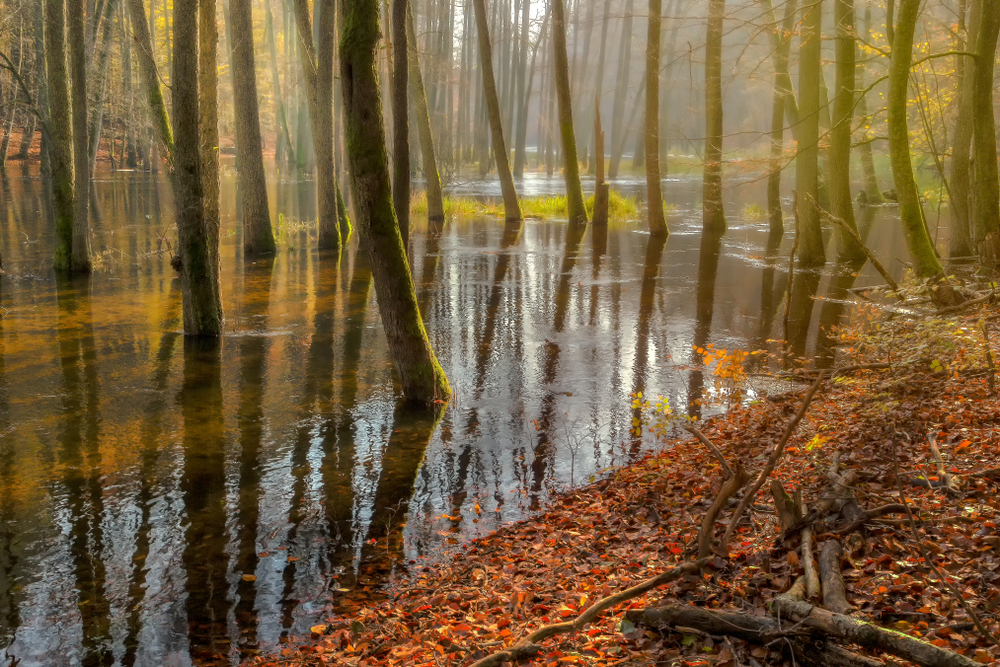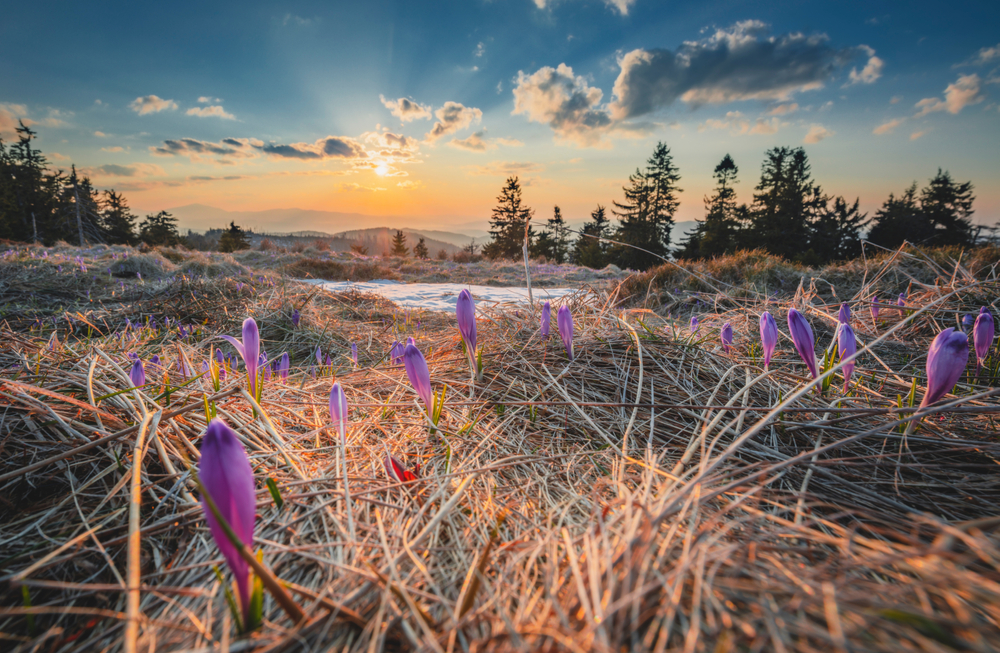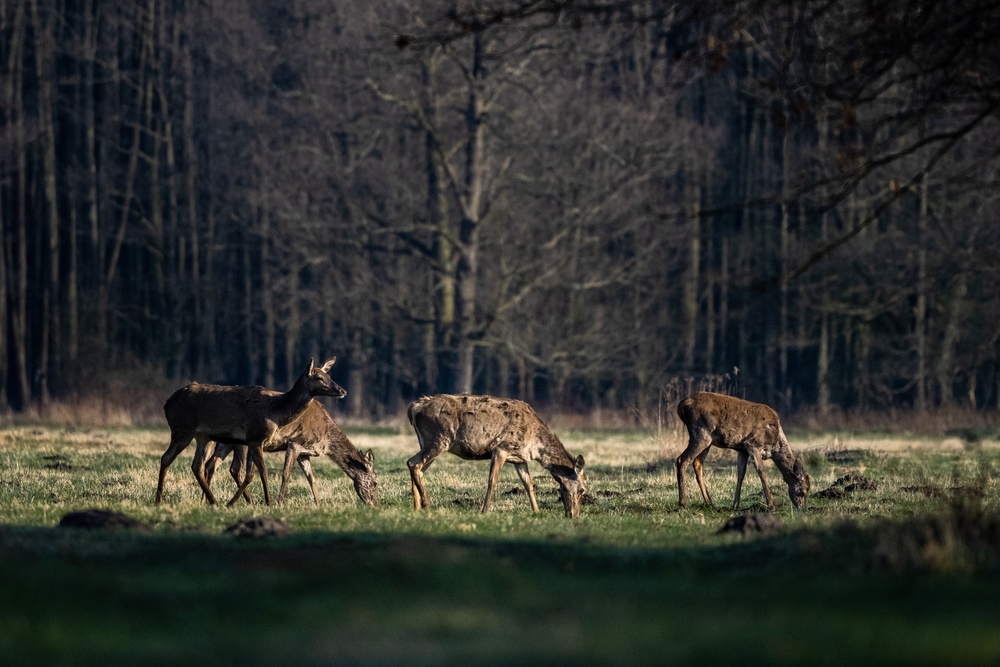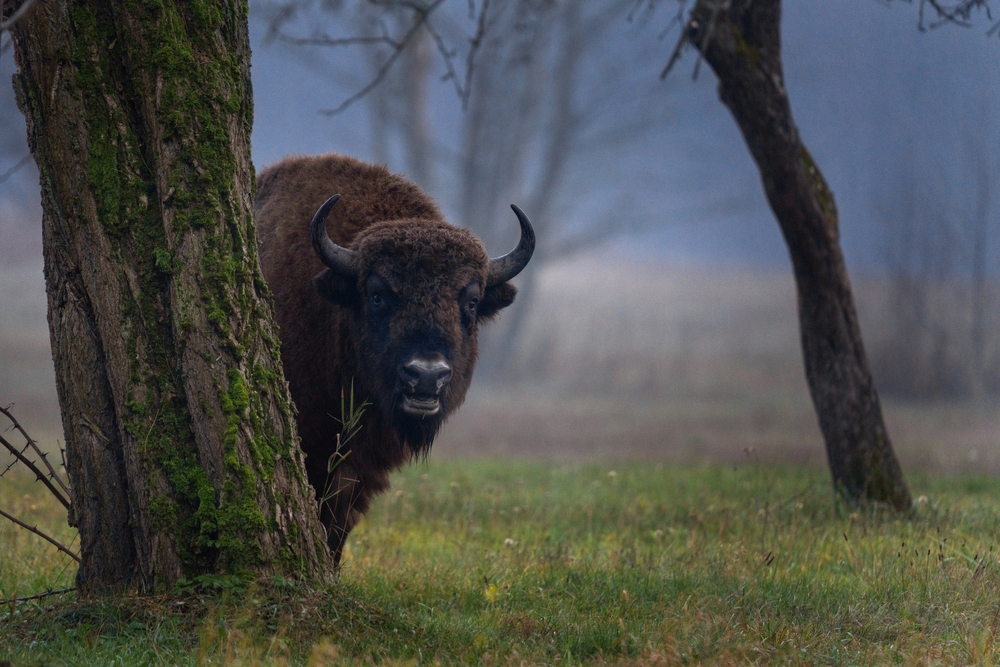Ojców Overview
Ojców National Park, known locally as Ojcowski Park Narodowy, is the smallest national park in Poland, covering just 8.6 square miles (22.0 square kilometers).
Located in southern Poland, near Kraków, this park is nestled in the Kraków-Częstochowa Upland, a region famous for its dramatic limestone formations, deep valleys, and lush forests.
Established in 1956, the park is renowned for its picturesque landscapes, including limestone cliffs, ravines, and caves, with some of the most famous rock formations being Hercules’ Club (Maczuga Herkulesa) and the White Hand (Biała Ręka).
The Prądnik River winds through the park, carving out deep gorges and contributing to the stunning karst topography, while an extensive network of caves, including Łokietek’s Cave and Ciemna Cave, adds to its geological allure.
The vegetation of Ojców National Park is incredibly diverse for its size, with over 1,000 species of vascular plants. Beech, fir, and pine trees dominate the forested areas, while meadows and limestone slopes host a variety of rare and protected plant species.
The park’s rich biodiversity is attributed to its varied terrain and microclimates, supporting numerous plant communities unique to this region of Poland. Mosses, ferns, and orchids thrive in the moist, shaded areas of the park, while sunlit meadows bloom with colorful wildflowers in the warmer months.
Wildlife in Ojców National Park is equally remarkable, with a variety of mammals, birds, amphibians, and insects calling this small but ecologically rich area home. Among the park’s most notable inhabitants are bats, with over 17 species recorded in its many caves, making it an important site for bat conservation in Poland. Roe deer, wild boars, and red foxes roam the forests, while badgers and martens can occasionally be spotted.
The park is also home to numerous bird species, including the Eurasian eagle-owl, black woodpecker, and common buzzard, which soar above the limestone cliffs and nest in the park’s ancient trees. The presence of rare and endemic insects, such as the Apollo butterfly, further highlights the park’s ecological significance.
Among the most popular features of Ojców National Park is the medieval Ojców Castle, a historic fortress that once guarded the trade routes of southern Poland. Pieskowa Skała Castle, a beautifully preserved Renaissance structure, stands on a limestone cliff and offers breathtaking views of the surrounding landscape.
The park’s extensive cave systems, particularly Łokietek’s Cave, attract visitors interested in exploring underground chambers and learning about the legends associated with them. Wooden churches and traditional cottages scattered throughout the park reflect the historical and cultural heritage of the region.
Visitors can experience the park through a variety of activities, with well-marked hiking and cycling trails providing access to its most scenic and historically significant sites. Rock climbing is popular on the limestone cliffs, while guided tours of the caves offer insight into their geological formations and history.
The Prądnik River, which flows through the park, adds to its scenic charm and supports a small but thriving aquatic ecosystem. In winter, the park transforms into a quiet, snow-covered wonderland, offering a different yet equally stunning experience.
Conservation efforts within Ojców National Park have focused on preserving its delicate ecosystems, particularly its limestone formations, forests, and bat populations. Strict regulations on tourism and infrastructure development have helped maintain its natural beauty, while ongoing research supports biodiversity conservation.
Challenges such as habitat fragmentation and climate change pose threats to the park’s unique flora and fauna, but careful management and conservation initiatives have ensured that this remarkable landscape remains protected for future generations.












































































